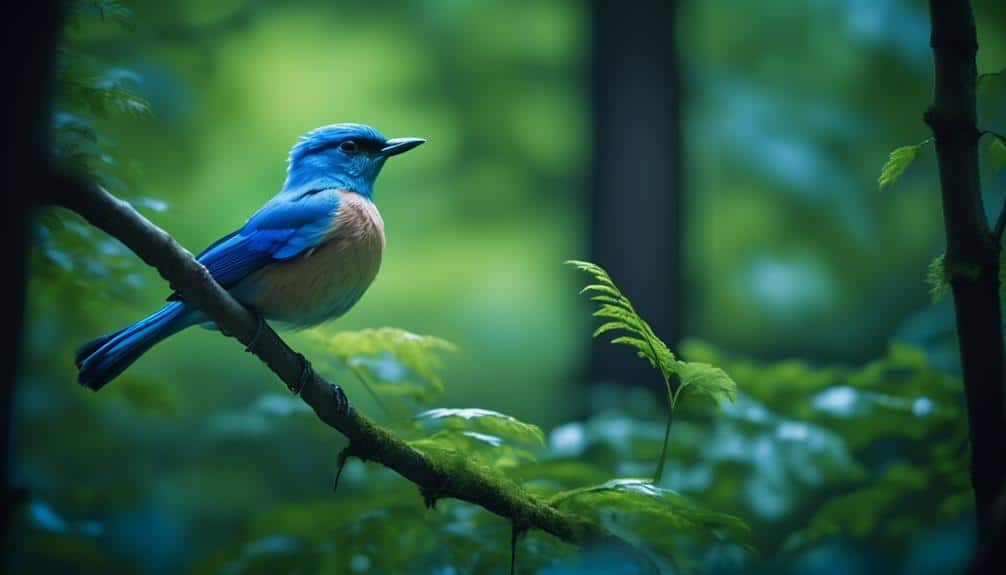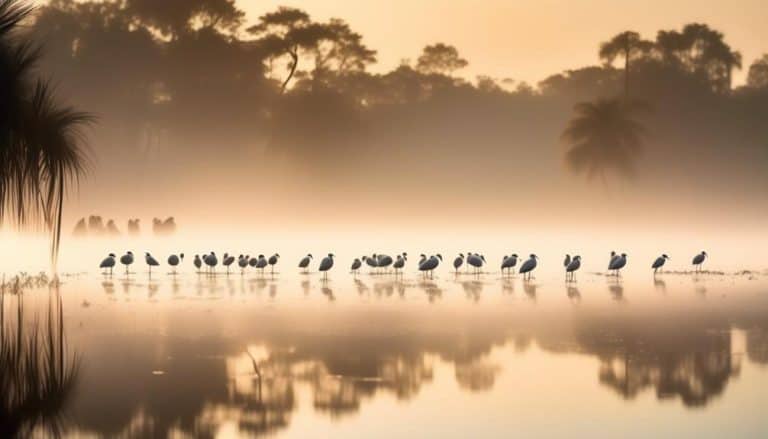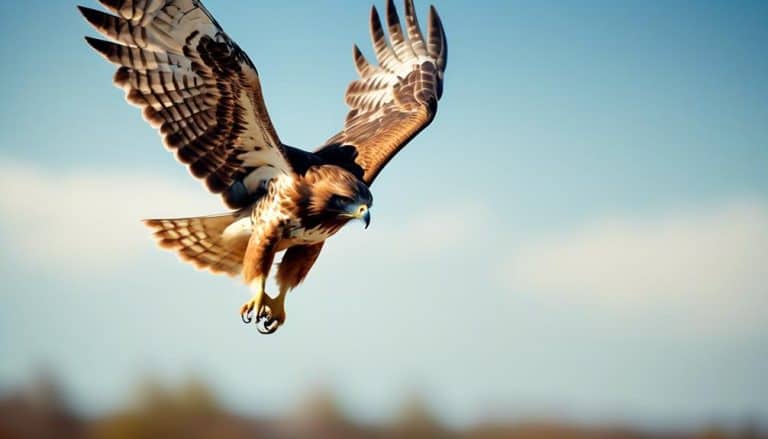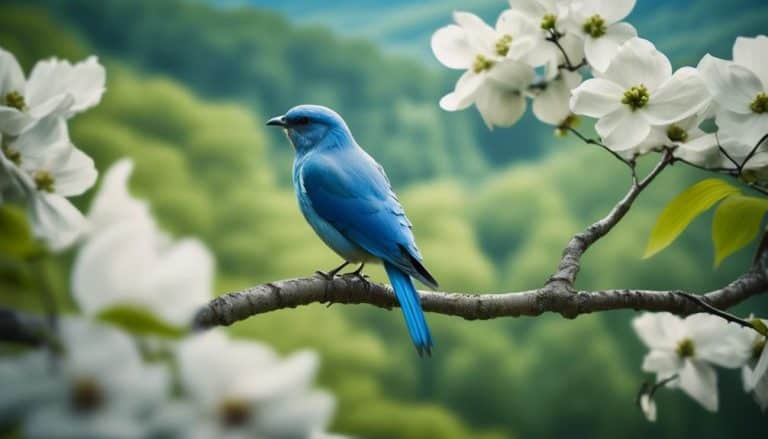As I stood on the edge of a tranquil meadow in Wisconsin, a flash of vibrant blue caught my eye. It was as if a piece of the summer sky had descended upon the earth, embodied in the form of a bluebird.
These captivating creatures, known for their melodious songs and stunning plumage, have long been a cherished sight in the Badger State. However, beneath their captivating beauty lies a tale of fascinating diversity and unique challenges.
Join me on a journey through the world of bluebirds in Wisconsin, where we will explore their different species, nesting habits, dietary preferences, and the ongoing efforts to protect these beloved residents.
The Eastern Bluebird: Wisconsin's Beloved Resident
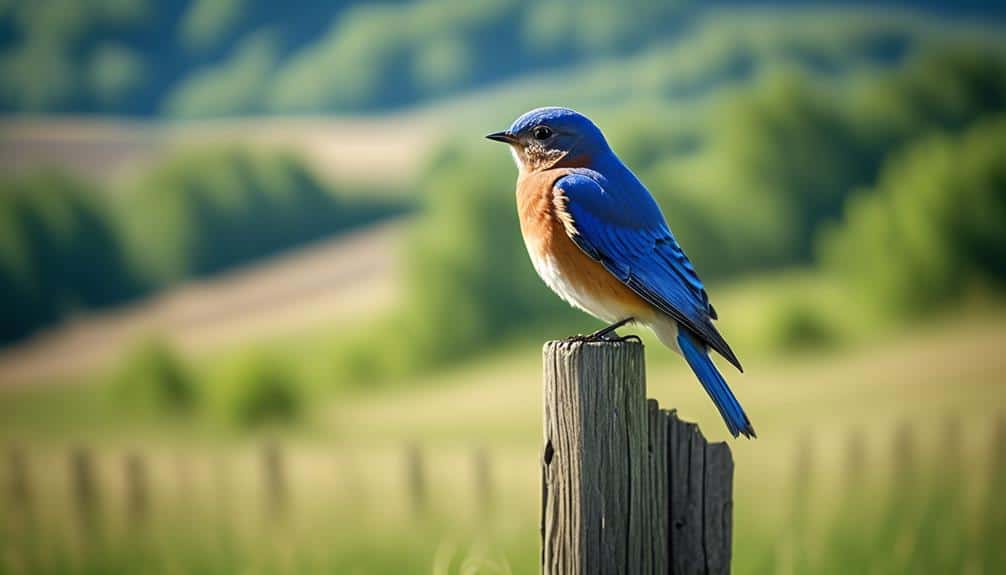
The Eastern Bluebird is a cherished resident of Wisconsin, captivating birdwatchers with its vibrant blue plumage and melodious song. Eastern bluebird conservation efforts have played a crucial role in maintaining and even increasing the population of these beloved birds in the state.
Historically, the bluebird population in Wisconsin faced significant declines due to habitat loss and competition with invasive species. However, thanks to dedicated conservation initiatives, the Eastern bluebird population has shown positive trends in recent years. Nest box programs have been instrumental in providing suitable nesting sites for bluebirds, as they prefer open habitats with scattered trees. These artificial nest boxes mimic natural tree cavities and have proven successful in increasing the breeding success of bluebirds.
Furthermore, the implementation of conservation practices, such as the preservation of grasslands and the control of invasive species, has created a more favorable environment for bluebirds. By maintaining suitable habitat and reducing threats, Wisconsin has become a haven for Eastern bluebirds.
Monitoring programs have been vital in tracking the population trends of bluebirds. Citizen scientists and ornithologists have collaborated to collect data on bluebird sightings and nesting success. This information allows researchers to assess the effectiveness of conservation efforts and make informed decisions for the future.
The Western Bluebird: A Rare Sight in the Badger State
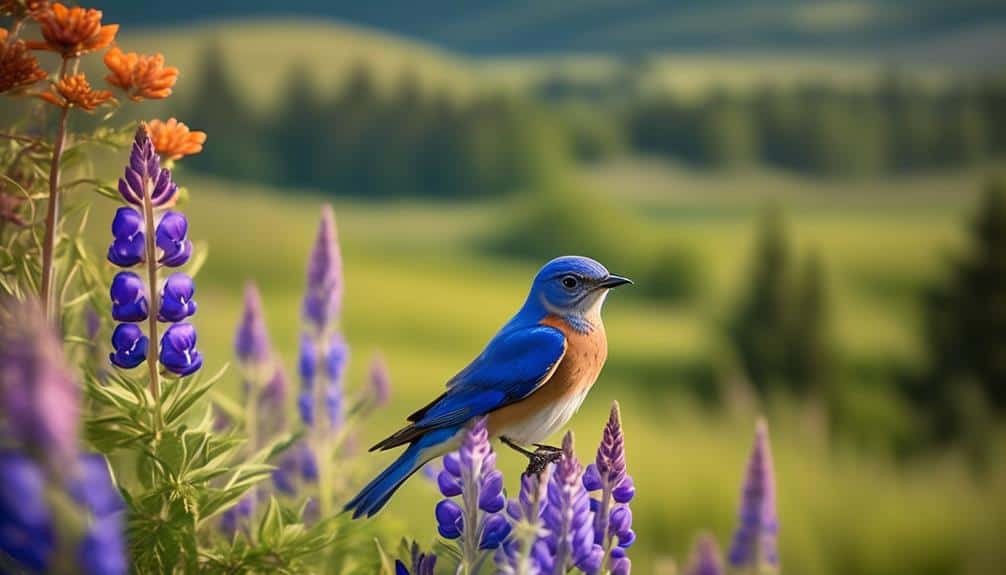
After witnessing the successful conservation efforts for the Eastern bluebird in Wisconsin, it's intriguing to explore the rarity of Western bluebird sightings in the Badger State. Unlike their Eastern counterparts, Western bluebirds are seldom seen in Wisconsin. This is primarily due to their preference for different habitats and their limited population size in the region.
The Western bluebird, scientifically known as Sialia mexicana, is typically found in the western parts of the United States, including the Rocky Mountains and the Pacific Coast. Their range rarely extends into the Midwest, making Wisconsin an uncommon sighting for these beautiful birds.
The decline in Western bluebird populations is a significant factor contributing to their rarity in Wisconsin. Loss of suitable habitat, such as open woodlands and grassy meadows, has led to a decrease in their numbers. Additionally, competition for nesting sites with other bird species and the prevalence of nest parasites, like the brown-headed cowbird, have further impacted their population.
Efforts to conserve and restore suitable habitats for Western bluebirds in Wisconsin are crucial to increase the likelihood of sightings. By providing nest boxes, managing grasslands, and reducing the impact of nest parasites, conservationists can help support the recovery of this rare and beautiful species in the Badger State.
The Mountain Bluebird: A High-altitude Visitor
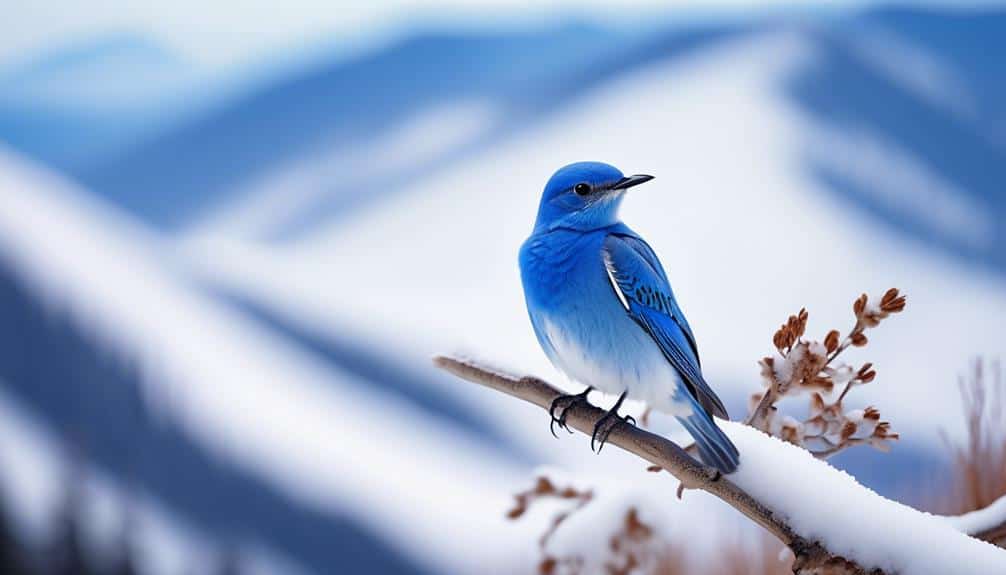
Since the Mountain bluebird is known for its preference for high-altitude habitats, it's a rare sight in the lower elevations of Wisconsin. These stunning blue birds are more commonly found in the western regions of North America, where they thrive in the vast mountain ranges. Their ability to adapt to the harsh conditions of high altitudes sets them apart from other species of bluebirds.
Migration patterns:
- Mountain bluebirds are highly migratory birds, traveling long distances to reach their preferred habitats.
- They breed in the mountainous regions during the summer months, where they find ample food sources and suitable nesting sites.
- As winter approaches, they make their way to lower elevations or migrate to warmer areas in the southern United States.
These migration patterns allow the Mountain bluebirds to survive the extreme temperatures and limited resources found in high-altitude habitats. Their ability to navigate long distances and find suitable habitats during different seasons is truly remarkable.
Bluebird Diet: What Do They Feast On?
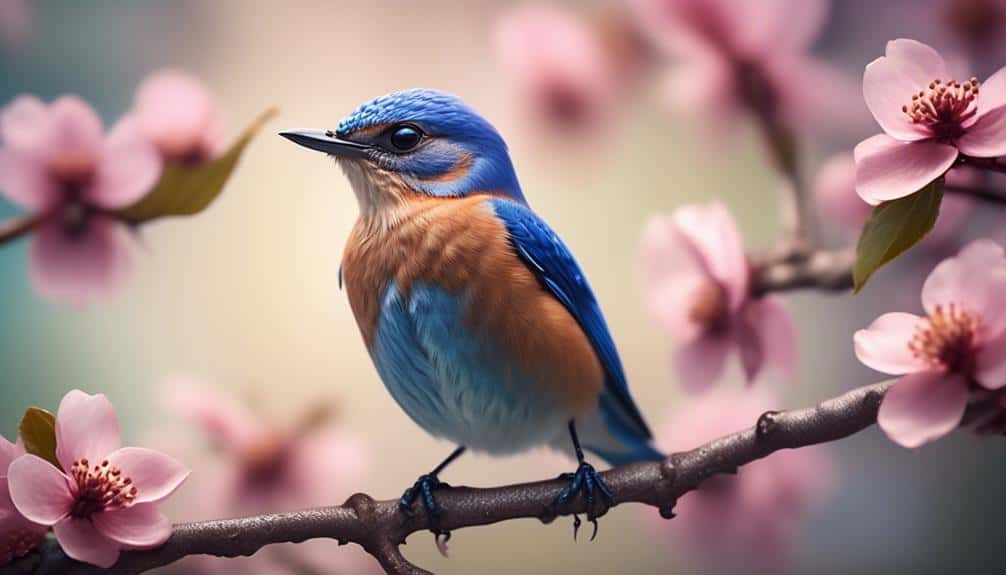
Having established the migratory patterns and adaptability of Mountain bluebirds, let's now explore their dietary preferences and the food sources they rely on.
Bluebirds are insectivores, meaning they primarily feed on insects. Their diet consists of a wide variety of insects such as beetles, grasshoppers, crickets, caterpillars, and spiders. They're especially fond of grasshoppers and beetles, which make up a significant portion of their diet.
Bluebirds are also known to consume small fruits and berries when insects are scarce. They've a particular preference for fruits like elderberries, holly berries, and wild grapes. These fruits provide them with essential vitamins and nutrients, especially during the breeding season when they need extra energy.
In terms of feeding habits, bluebirds are skilled hunters. They perch on a high vantage point, such as a tree branch or fence, and scan the ground for movement. Once they spot their prey, they swoop down and catch it in their beaks. They're agile flyers and can quickly change direction mid-flight to catch insects in the air.
Understanding the dietary preferences of bluebirds is crucial for their conservation and management. By providing suitable habitats with abundant insect populations and fruit-bearing plants, we can ensure a stable food source for these beautiful birds and support their population growth.
Nesting Habits of Blue Birds in Wisconsin
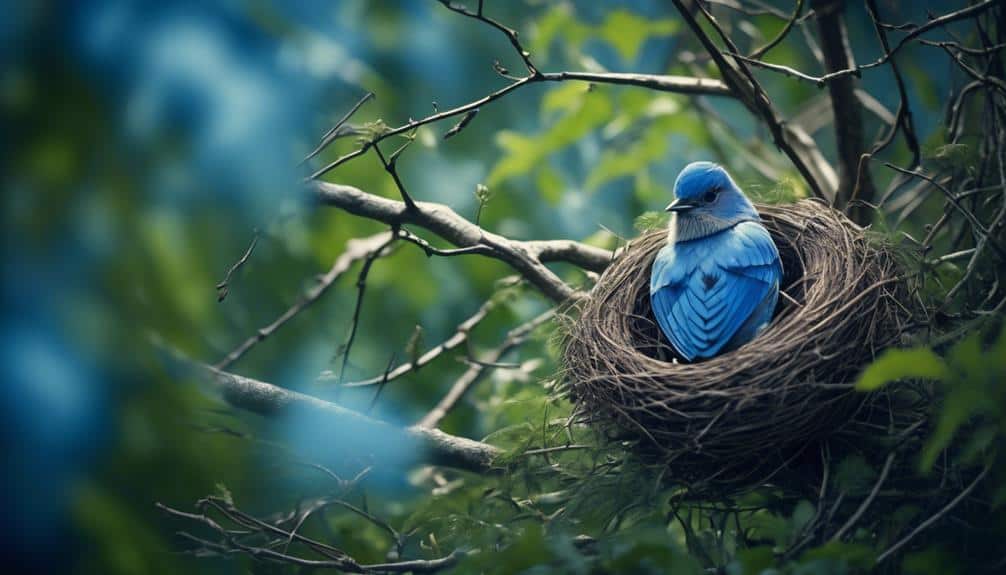
Blue birds in Wisconsin exhibit interesting nesting habits. These beautiful birds are known for their annual migration, traveling long distances to find suitable nesting sites. When it comes to nesting, blue birds are meticulous in their selection of materials. They carefully choose the finest twigs, leaves, and grasses to build their nests, creating a cozy and secure environment for their eggs and young.
To convey a deeper understanding of their nesting habits, consider the following bullet points:
- Blue birds often select nest boxes or tree cavities as their preferred nesting sites. These structures provide protection from predators and harsh weather conditions.
- They line their nests with soft materials such as feathers, fur, and fine grasses. This lining provides insulation and comfort for the growing chicks.
- Blue birds are known to reuse their nests from previous years, with both males and females participating in nest maintenance and refurbishment.
Understanding the nesting habits of blue birds is crucial for the conservation of these species. By providing suitable nesting sites and ensuring the availability of nesting materials, we can support their populations and contribute to their overall well-being.
Conservation Efforts: Protecting Blue Birds in the Badger State
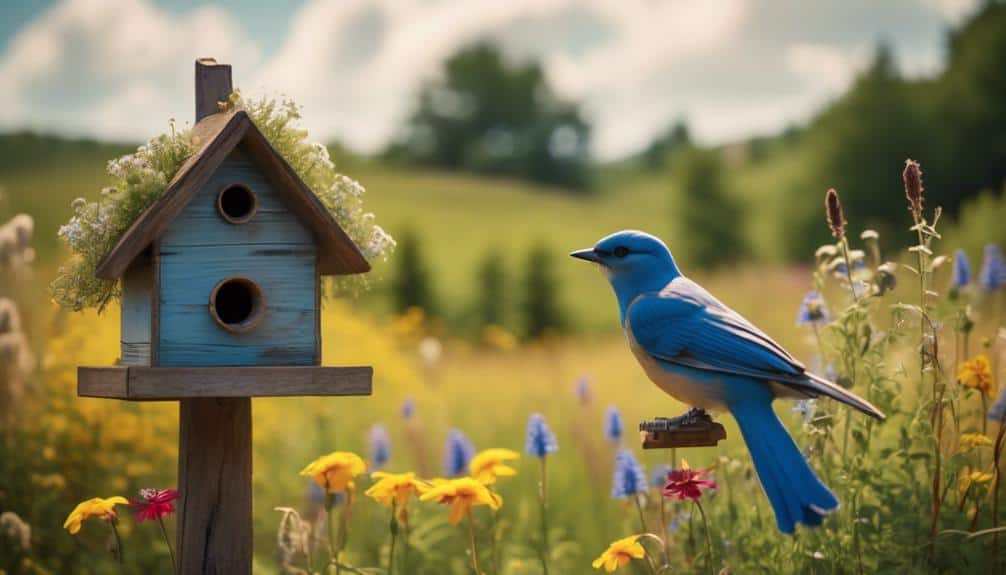
To ensure the continued well-being of blue birds in Wisconsin, conservation efforts focus on protecting their habitats and providing suitable nesting sites. The blue bird population in Wisconsin has faced challenges in recent years due to habitat loss and competition for nesting sites.
To address these issues, conservation organizations and government agencies have implemented various measures to protect blue bird habitats and promote their breeding success.
One important conservation effort is the creation and maintenance of blue bird trails. These trails consist of a series of nesting boxes strategically placed in suitable habitats across the state. These nesting boxes mimic natural tree cavities and provide safe and secure nesting sites for blue birds. By monitoring and maintaining these boxes, conservationists can ensure that they remain suitable for blue bird occupancy.
Additionally, habitat restoration projects play a crucial role in protecting blue bird populations. These projects involve restoring and preserving the natural habitats that blue birds rely on for nesting and foraging. This includes planting native vegetation, creating brush piles, and managing invasive species that can negatively impact blue bird habitats.
Conservation efforts also involve educating the public about the importance of protecting blue bird habitats. By raising awareness and promoting responsible land management practices, we can help ensure the long-term survival of blue birds in Wisconsin.
Frequently Asked Questions
What Is the Average Lifespan of a Bluebird in Wisconsin?
The average lifespan of a bluebird in Wisconsin is around 6 to 10 years. Bluebird conservation efforts and providing suitable habitat, such as open fields with nearby trees, can help increase their survival rates.
Do Bluebirds Migrate From Wisconsin During the Winter Months?
Do bluebirds migrate from Wisconsin during the winter months? Yes, they do. Bluebirds have specific migration patterns and winter survival strategies in place to ensure their survival during harsh winter conditions.
How Many Eggs Does a Bluebird Typically Lay in One Nesting Season?
Bluebird nesting habits and breeding behavior are fascinating. Typically, a bluebird lays around 4-7 eggs in one nesting season. This ensures the continuation of their species and contributes to the beauty of our natural world.
Are There Any Specific Predators That Pose a Threat to Bluebirds in Wisconsin?
In Wisconsin, bluebirds face predator threats that can disrupt their nesting habits. It's important to be aware of specific predators to protect these beautiful birds and their vulnerable nesting sites.
Are There Any Initiatives in Place to Increase the Bluebird Population in Wisconsin?
There are several initiatives in place to increase the bluebird population in Wisconsin. These include bluebird conservation efforts and bluebird habitat restoration, which aim to create suitable nesting areas and provide resources for their survival.
Conclusion
In conclusion, blue birds in Wisconsin aren't only a cherished resident, but their presence also serves as a testament to the state's commitment to conservation efforts.
These beautiful creatures, such as the Eastern Bluebird, Western Bluebird, and Mountain Bluebird, have adapted to the diverse habitats of Wisconsin.
Through careful protection and preservation of their nesting habitats, these blue birds continue to grace our skies like vibrant sapphires, adding a touch of enchantment to our natural landscape.

